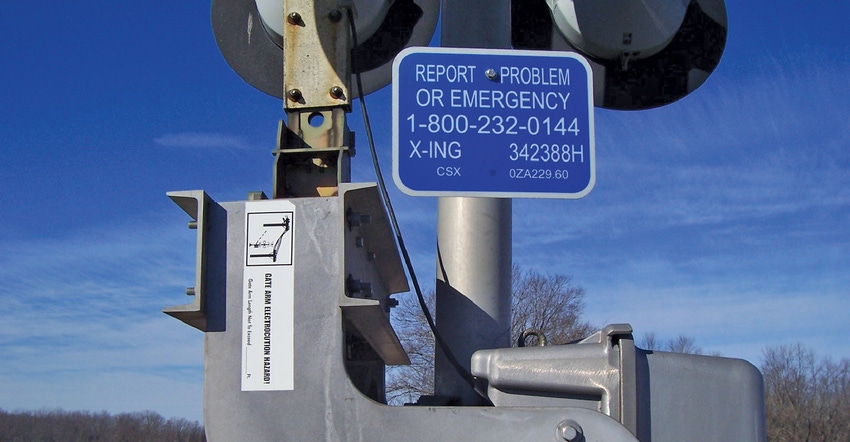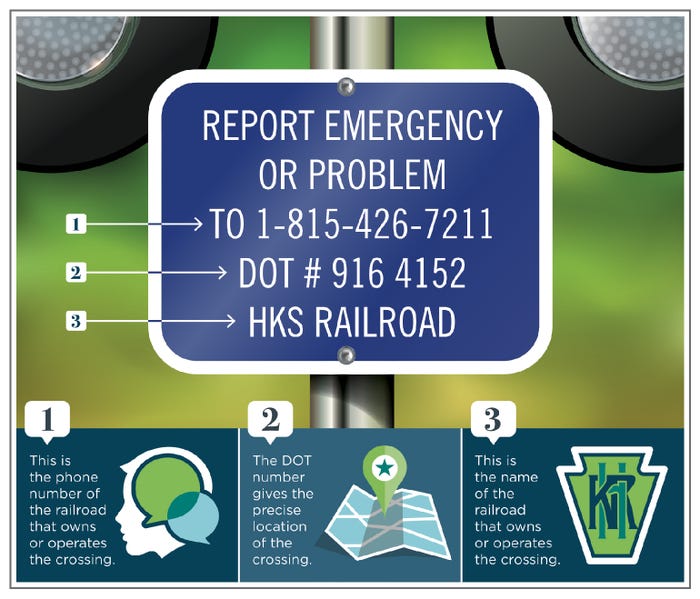
When it comes to railroad crossings, you’re conditioned to look for a red stop sign or a set of warning lights and crossing gates. You will also recognize a yellow warning sign with symbols that indicate a railroad crossing. Your first instinct may not be to look for a blue sign, but Fred Whitford, director of Purdue University Pesticide Programs, says that in case of an emergency, it may contain the information you need to avoid disaster.
Purdue Pesticide Programs recently released “Railroad Crossings: Stop, Look, Stay Alive.” This color publication, PPP-135, is available at edustore.purdue.edu, or download it for free. Whitford says the most important thing to know about railroad safety is how to use the information on those blue signs. They are required to be posted at each railroad crossing, either on the warning signal and gate closing apparatus, or on a post. The signs are part of the Emergency Notification System.
Related: 11 tips that could save your life at a railroad crossing
The blue sign contains vital information. First, it lists the emergency number to call if your vehicle or implement is stuck on the tracks. The number connects straight to someone at the railroad that owns the tracks. The second number, Whitford says, is a code supplied by the Department of Transportation that is specific to that one crossing in the entire country.
“Your first instinct may be to call 911, but in this case, you want to call the railroad first — the top number,” Whitford says. “The person who answers knows what the DOT number means, and can use it to locate your crossing quickly.”

If a train is on the way, the person can notify personnel of the problem ahead and hopefully stop the train in time. Once you’ve communicated with the railroad person, it’s OK to call 911, Whitford says. If there is time to get a wrecker there and get your vehicle off the tracks, then call the railroad back and explain that the situation is resolved. You can also use that number to report an overgrown crossing or other physical problems.
Here’s a bonus tip: If your vehicle is stuck at a crossing with a train coming, leave it immediately and run at a 45-degree angle away from the tracks, but in the direction the train is coming. If the train hits your vehicle, debris will be pushed away from you, Whitford notes.
About the Author(s)
You May Also Like




